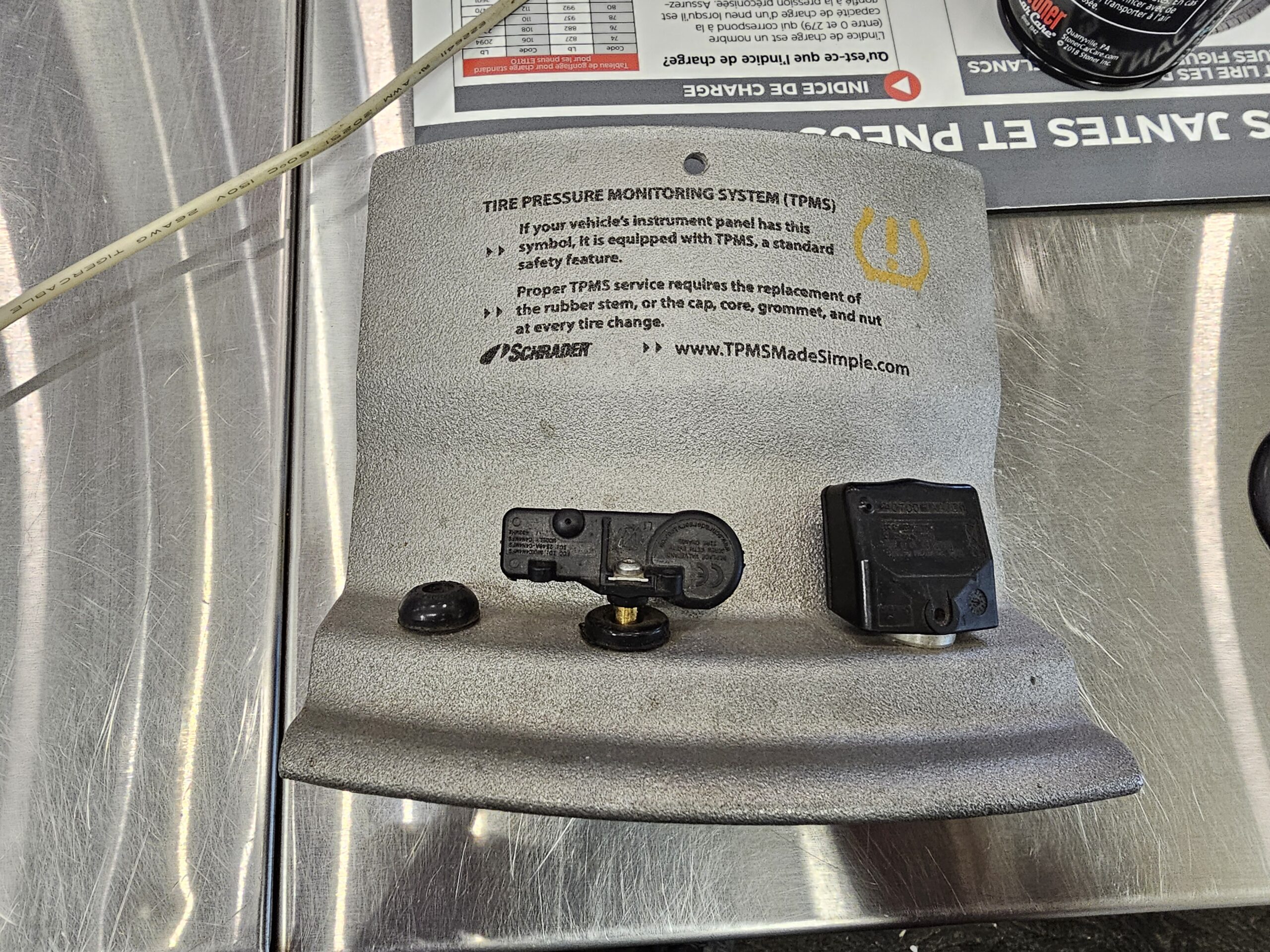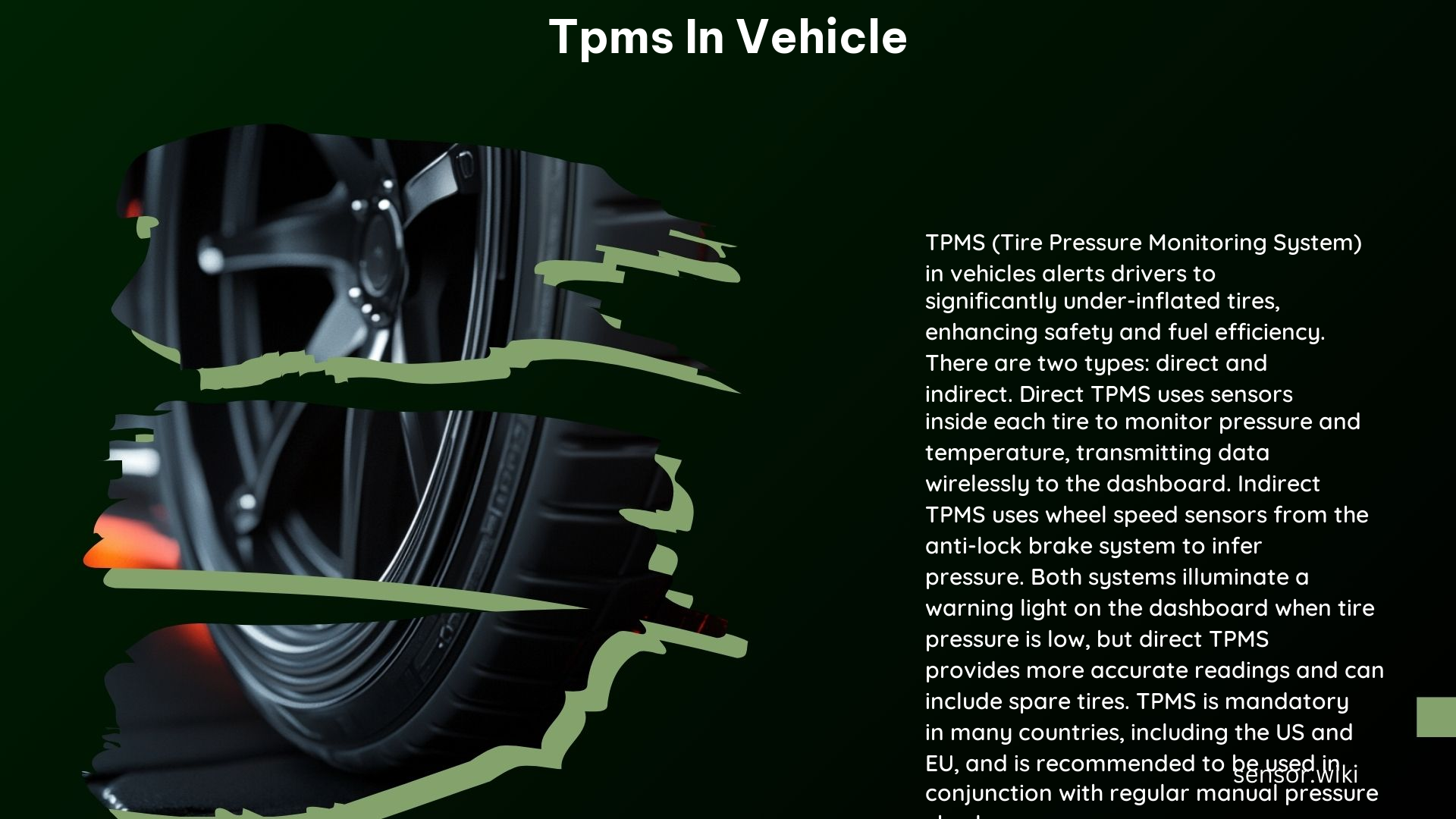The Tire Pressure Monitoring System (TPMS) is a crucial safety feature in modern vehicles, designed to alert drivers when their tires are underinflated. This comprehensive guide will provide you with a deep understanding of TPMS, its technical specifications, and how to ensure your sensors sync properly with your vehicle.
Understanding TPMS Types

There are two main types of TPMS systems used in vehicles:
Direct TPMS
- Uses sensors installed inside each tire to measure the air pressure directly.
- The sensors transmit the pressure data wirelessly to the vehicle’s onboard computer.
- Provides real-time tire pressure readings, allowing for more accurate monitoring.
- Typically includes a battery-powered transmitter that sends a signal to the vehicle’s computer.
- Requires regular calibration and maintenance, including periodic battery replacement.
Indirect TPMS
- Uses the vehicle’s wheel speed sensors, typically integrated with the Anti-lock Brake System (ABS), to infer tire pressure.
- Measures wheel speed and compares it to the recommended speed to detect underinflation.
- Does not provide real-time tire pressure readings, but rather relies on indirect measurements.
- Does not require sensors installed in the tires, making it a more cost-effective solution.
Understanding the type of TPMS installed in your vehicle is crucial for proper maintenance and troubleshooting.
Ensuring TPMS Sensor Synchronization

To ensure your TPMS sensors sync properly with your vehicle, follow these steps:
-
Check the Vehicle Manual: Consult your vehicle’s owner’s manual to understand the specific TPMS system installed and how it works. This will help you navigate the system’s features and warning lights.
-
Check Tire Pressure Regularly: Use a high-quality tire pressure gauge to regularly check the pressure in all four tires, ensuring they match the recommended pressure specified in your vehicle’s manual. This will help prevent underinflation and maintain the accuracy of the TPMS system.
-
Calibrate and Maintain TPMS Sensors: For direct TPMS systems, the sensors need to be properly calibrated and maintained. Replace the sensor batteries periodically and ensure the sensors are not damaged or malfunctioning.
-
Reprogram Sensors After Tire Replacement: If you replace your tires, you’ll need to reprogram the TPMS sensors to ensure they continue to function correctly and sync with the vehicle’s onboard computer.
-
Monitor the TPMS Warning Light: Pay close attention to the TPMS warning light on your dashboard. If it stays illuminated, check your tire pressure immediately. If it flashes and remains on, there may be a problem with the TPMS system that requires professional inspection.
-
Consult a Professional: If you encounter any issues with your TPMS system or are unsure about its maintenance, it’s best to consult a qualified automotive technician or mechanic for assistance.
Technical Specifications of TPMS
Direct TPMS Sensor Specifications
- Sensor Type: Piezoelectric or strain gauge pressure sensor
- Pressure Range: Typically 0-500 kPa (0-72.5 psi)
- Accuracy: ±3% of the measured value
- Sampling Rate: 30-60 seconds
- Transmission Frequency: 315 MHz or 433 MHz
- Transmission Power: 1-10 mW
- Battery Life: 5-10 years, depending on usage and sensor design
Indirect TPMS Specifications
- Wheel Speed Sensor Type: Hall effect or variable reluctance sensor
- Wheel Speed Measurement Range: Typically 0-300 km/h (0-186 mph)
- Wheel Speed Accuracy: ±1% of the measured value
- Sampling Rate: 50-100 Hz
- Pressure Estimation Algorithm: Compares wheel speeds to detect underinflation
Multiple TPMS Sensors with the Same Code
If you have multiple TPMS sensors with the same code on your vehicle, it can lead to issues with the system’s accuracy and performance. Here are some key considerations:
- Sensor Interference: Sensors with the same code can cause interference, leading to inaccurate pressure readings.
- System Confusion: The vehicle’s onboard computer may become confused when receiving multiple signals with the same code, resulting in incorrect warnings or failure to detect underinflation.
To avoid these problems, ensure that each TPMS sensor has a unique code and is properly calibrated and maintained.
Adding Additional TPMS Sensors
If you need to add additional TPMS sensors to your vehicle, consider the following:
- Compatibility: Ensure the new sensors are compatible with your vehicle’s TPMS system. Check the manufacturer’s specifications and recommendations.
- Unique Code: Each new sensor should have a unique code to prevent interference and confusion with the vehicle’s onboard computer.
- Calibration: Properly calibrate the new sensors according to the manufacturer’s instructions to ensure they function correctly and sync with the TPMS system.
By following these guidelines, you can effectively integrate additional TPMS sensors into your vehicle without compromising the system’s performance.
Reference Links
- Wikipedia – Tire Pressure Monitoring System: https://en.wikipedia.org/wiki/Tire-pressure_monitoring_system
- Bridgestone Tires – My TPMS Light Came On, What Do I Do?: https://www.bridgestonetire.com/learn/maintenance/tpms-light-on/
- J.D. Power – What Is A TPMS Sensor?: https://www.jdpower.com/cars/shopping-guides/what-is-a-tpms-sensor
